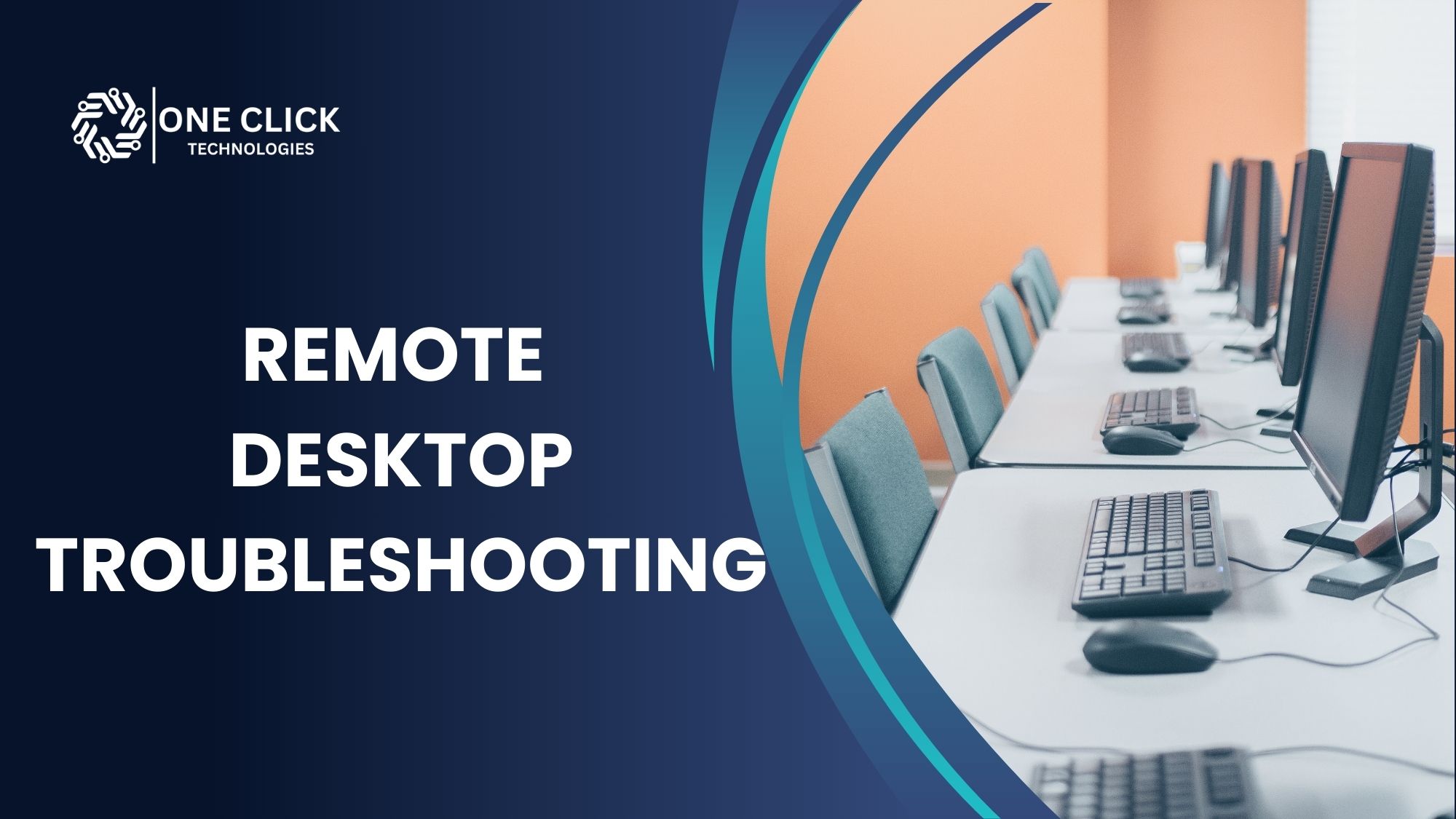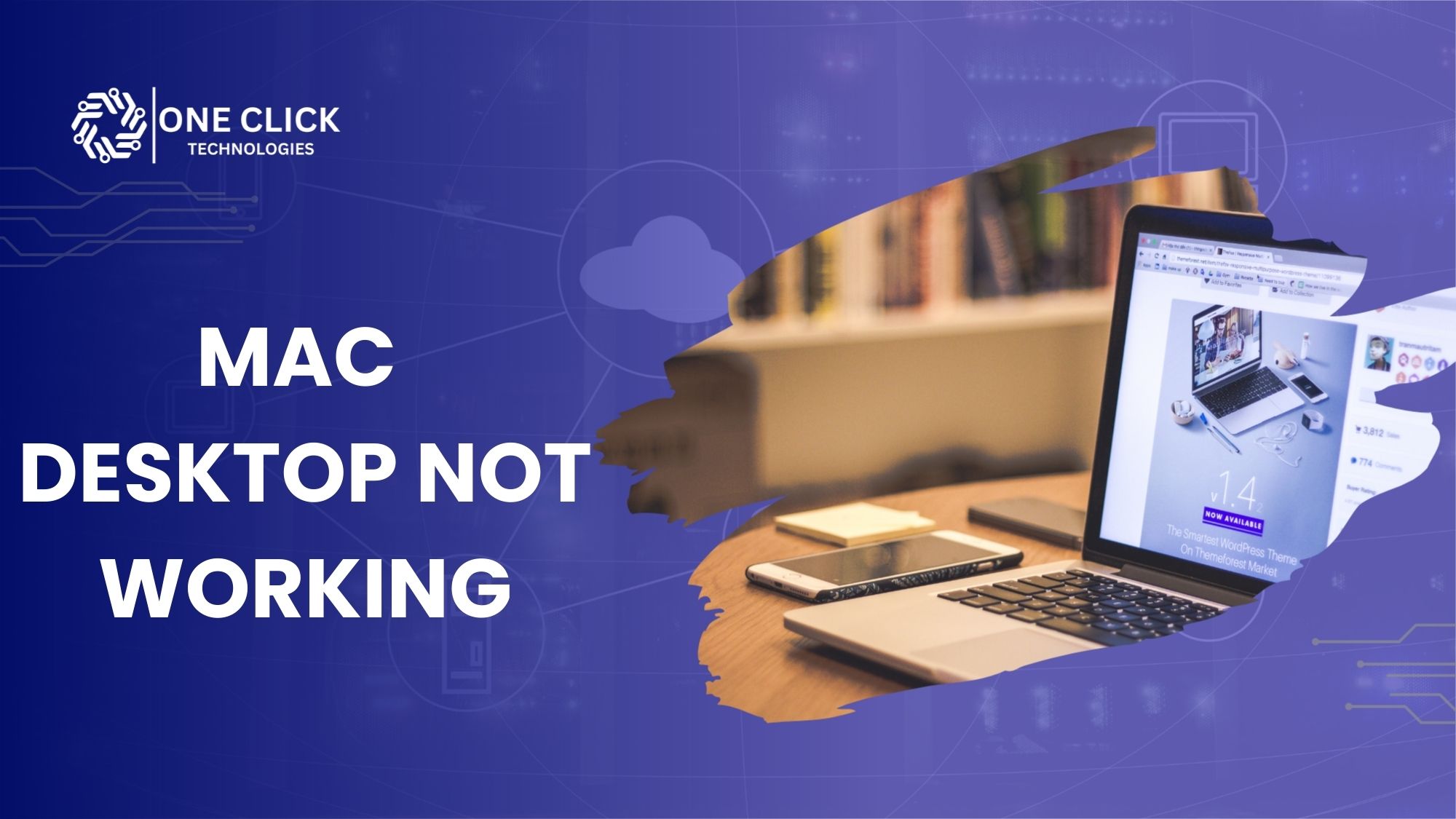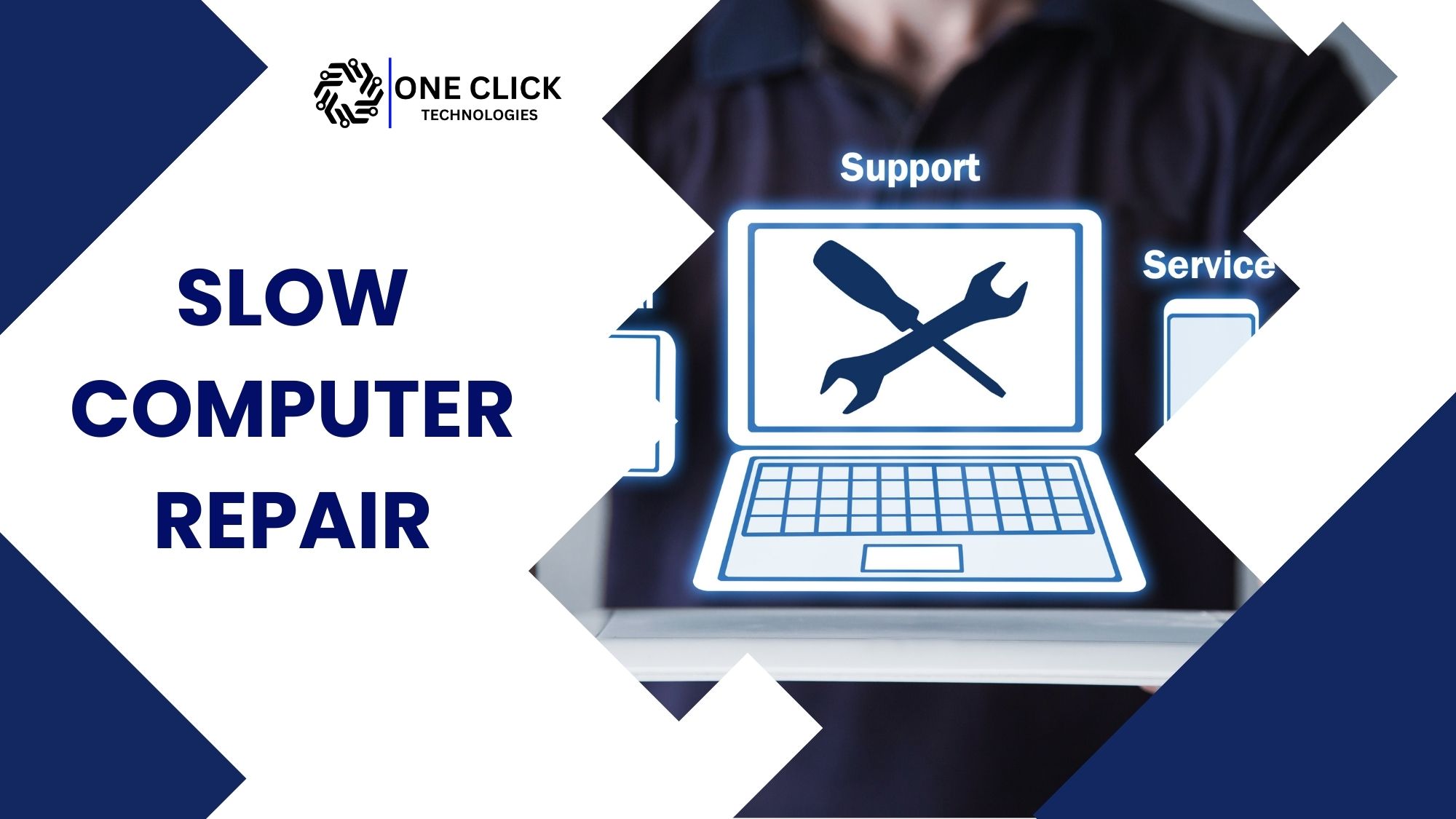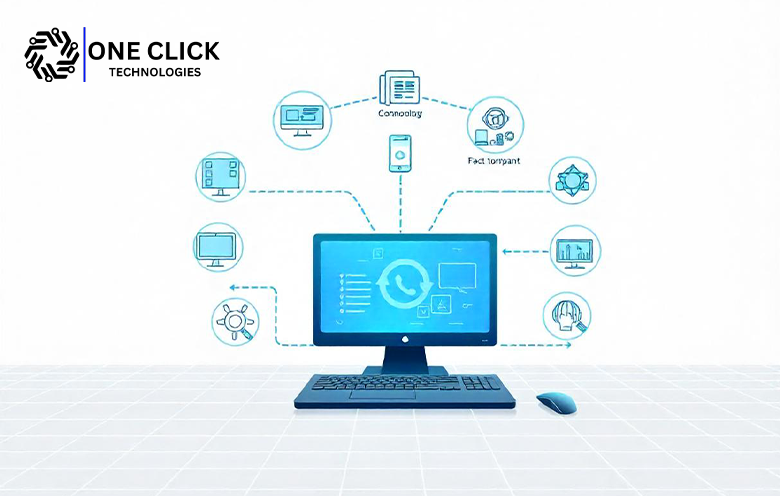If your remote desktop is not working, running slowly, or displaying unexpected errors, the quickest way to get back on track is through remote desktop troubleshooting. By applying the right troubleshooting steps, you can solve issues efficiently whether it’s connection problems, application crashes, or performance slowdowns all without leaving your current location. This complete guide will provide detailed, practical, and optimized solutions to help you diagnose and resolve issues from anywhere.
1. What Is Remote Desktop and Why It Matters
A remote desktop allows you to connect to a remote computer from anywhere, enabling you to work on files, run software, or manage system settings without being physically present. This technology is vital for remote work, IT management, and tech support.
Key Benefits:
- Enables remote troubleshooting without on-site visits.
- Allows quick remote control of another computer to fix issues.
- Maintains secure remote connections for sensitive data.
- Simplifies remote work by providing access to critical resources.
Whether you’re a home user or a business professional, understanding how to maintain and troubleshoot a remote desktop connection is essential for productivity.
2. Common Problems That Need Troubleshooting
Users often face common issues with remote desktops that disrupt workflow. These include:
- Connection problems like “can’t connect” errors.
- Slow remote desktop sessions causing lag.
- Application crashes during remote work.
- Windows Defender Firewall blocking access.
- Unstable RDP connection.
- Incorrect security settings preventing login.
- Outdated remote access software leading to compatibility problems.
Recognizing these issues early ensures you can deploy the right troubleshooting solutions before they escalate.
3. Step-by-Step Troubleshooting Process
Step 1: Check Network Status
- Test your internet speed; slow networks are a leading cause of connectivity issues.
- Restart your router to clear temporary network problems.
- Ensure the remote device is online.
Step 2: Verify Access Settings
- Enable remote desktop in Windows 10, Windows 11, or Windows Server.
- Confirm Windows Defender Firewall is not blocking connections.
- Review security settings to ensure the remote system is accessible.
Step 3: Confirm Permissions
- Ensure the account has rights to connect to a remote system.
- Configure remote desktop services correctly for multi-user environments.
Step 4: Diagnose and Resolve Issues
- Restart the remote machine.
- Use troubleshooting tasks for display, network, and sound.
- Check connections using Microsoft Remote Desktop or Chrome Remote Desktop.
Step 5: Test and Reconnect
- Try reconnecting using remote desktop access.
- If still unable to connect, try from another computer.
- Use software like Chrome Remote Desktop to confirm software-level issues.
4. Tools for Remote Troubleshooting
Having the right tools improves troubleshooting efficiency:
- Microsoft Remote Desktop for Windows systems.
- Chrome Remote Desktop for cross-platform access.
- Free remote tools for quick, one-time fixes.
- Enterprise-grade secure remote software for business environments.
These tools help you establish a remote connection, perform troubleshooting work, and resolve technical issues effectively.
5. How to Ensure the Remote Connection Works Well
To maintain efficient remote access:
- Keep remote desktops updated with the latest patches.
- Maintain reliable remote access via stable internet.
- Regularly review security settings.
- Train your support team for remote troubleshooting sessions.
6. Preventing Remote Desktop Issues
Prevention saves time and resources:
- Schedule system updates, including Windows systems.
- Audit security settings regularly.
- Maintain system health to avoid computer issues.
- Keep records of troubleshooting sessions for future reference.
7. Business Benefits of Effective Remote Troubleshooting
For companies, having an effective remote troubleshooting strategy means:
- The support team can resolve issues without traveling.
- Troubleshooting work is handled during active remote sessions.
- Reduced downtime, ensuring smoother remote work operations.
8. Remote Desktop Security Best Practices for Safe and Reliable Connections
When working with remote desktop access, security should be your highest priority. Weak security leaves your system open to breaches, data loss, and unauthorized access. The goal is to create a secure remote environment that balances protection with performance.
- Enable Secure Remote Access with Encryption: Always use encrypted protocols such as TLS or VPN tunneling. This ensures that data transmitted between your local and remote machine is safe from interception.
- Use Multi-Factor Authentication (MFA): MFA adds an extra verification step beyond your password, making it much harder for cybercriminals to gain access even if credentials are compromised.
- Restrict Access with IP Whitelisting or Geo-Restrictions: Limit remote desktop access to specific, trusted IP addresses or geographic regions. This reduces the chance of brute-force or automated attacks from unknown sources.
- Keep Systems and Remote Desktop Services Updated: Regular updates patch vulnerabilities in both your operating system and remote desktop services, ensuring you stay protected from emerging threats.
- Monitor Access Logs Regularly: Keep an eye on connection attempts and session activity. This proactive approach helps detect unusual login behavior early, allowing you to take immediate action.
By implementing these remote desktop security best practices, you create a secure, reliable, and efficient remote work environment that protects both personal and business data.
9. When to Call Professional Remote Desktop Tech Support
Seek expert tech support when:
- You can’t connect repeatedly despite troubleshooting.
- Remote desktop is not working even after checking all settings.
- Connection issues persist and impact workflow.
10. Advanced Remote Desktop Troubleshooting Tips for Maximum Performance
Bandwidth Optimization for Remote Desktop Connections
A poor connection often stems from bandwidth limitations. Reduce display resolution, disable background animations, and minimize the use of resource-heavy applications during sessions. These adjustments can significantly improve performance, especially in low-bandwidth or high-latency environments.
Geo-Optimized Strategies for Reliable Remote Access
Different regions face varying internet speeds and reliability. Select reliable remote access tools that offer adaptive streaming, data compression, and automatic reconnection. For global teams, use servers closer to the end user to reduce latency.
Effective Mobile Remote Desktop Troubleshooting Techniques
Mobile devices can introduce unique challenges such as smaller screen resolutions, weaker connections, and battery limitations. Update your remote access software regularly, optimize display settings for smaller screens, and ensure mobile permissions are correctly configured for uninterrupted remote troubleshooting.
Managing Multi-User Remote Desktop Environments Efficiently
In environments where multiple users share the same remote system, session conflicts can cause disruptions. Implement user policies, allocate session time slots, and monitor remote desktop services to ensure optimal system performance and fair resource allocation.
Strengthening Remote Desktop Security for Safe Connections
Cybersecurity should be a top priority. Enhance secure remote access with IP whitelisting, geo-restrictions, multi-factor authentication, and encryption layers. Regularly audit user access logs to detect suspicious activity.
12. Comprehensive Data Tables to Diagnose, Optimize, and Secure Remote Desktop Connections
Remote Desktop Error Codes and Their Meanings
| Error Code | Description | Recommended Action |
|---|---|---|
| 0x204 | Can’t connect to remote PC — occurs when the client cannot establish a session due to network or firewall blocks. | Verify the IP address, confirm DNS resolution, and check firewall settings to allow RDP traffic. |
| 0x207 | Network path not found — typically indicates the remote machine is offline or unreachable. | Confirm that the device is powered on, connected to the network, and accessible via ping or hostname. |
| 0x1104 | Protocol error — often caused by mismatched RDP versions or corrupted sessions. | Update the RDP client, restart the remote machine, and ensure compatible protocol versions. |
| 0x2104 | Authentication failed — caused by incorrect credentials or restricted policies. | Reset the username/password, check security policies, and confirm the account is enabled for remote login. |
Performance Optimization Settings for Remote Sessions
| Setting | Recommended Value | Benefit |
| Display Resolution | 1280×720 or lower | Reduces bandwidth usage and improves response time without major visual compromise. |
| Color Depth | 16-bit | Balances image clarity with faster rendering speeds, ideal for slower connections. |
| Visual Effects | Disabled | Minimizes CPU/GPU load, making remote interactions smoother. |
| Audio Playback | Play on local machine | Lowers remote system load by processing audio locally, reducing transmission delays. |
Security Layer Comparison for Remote Desktop Access
| Security Layer | Description | Best Use Case |
| Network Level Authentication (NLA) | Authenticates users before a full connection is established, preventing unauthorized access attempts. | Best for business environments requiring pre-login security. |
| VPN with RDP | Creates an encrypted tunnel between the local and remote machine before RDP connection. | Ideal for remote workers accessing sensitive company data. |
| IP Whitelisting | Restricts RDP access to specific, pre-approved IP addresses. | Useful for small teams with fixed IP locations. |
| Multi-Factor Authentication (MFA) | Adds a secondary verification step to prevent breaches even if passwords are compromised. | Recommended for high-security industries such as finance, healthcare, and government. |
Conclusion: Professional Help from OneClick Technologies LLC
Remote desktop troubleshooting helps you solve issues and keep your workflow uninterrupted. But if you face persistent issues from anywhere, you need reliable experts.
OneClick Technologies LLC offers professional remote troubleshooting sessions to diagnose and resolve issues quickly, whether it’s a remote PC connection failure, a misconfigured remote system, or a software error. Their support team ensures you can quickly connect and work without delays.
Contact OneClick Technologies LLC today for the best remote troubleshooting solutions and keep your systems running at peak performance.
Frequently Asked Questions (FAQs)
1. Why is my remote desktop connection so slow?
This is usually caused by low bandwidth, high latency, or resource-heavy display settings. Lower resolution and disable visual effects for better performance.
2. How can I fix the “Can’t connect” error in Remote Desktop?
Check your network connection, verify the remote computer’s IP, and ensure firewall settings allow RDP.
3. What causes frequent disconnections in Remote Desktop?
Unstable internet, short idle timeout settings, or VPN drops are common causes. Adjust timeout settings and use a reliable network.
4. Is Remote Desktop safe to use over the internet?
Yes, if you use secure methods like VPN, Network Level Authentication, and Multi-Factor Authentication.
5. Can I use Remote Desktop on mobile devices?
Yes. Install a compatible remote access app, ensure stable internet, and optimize display settings for smaller screens.
6. How do I enable Remote Desktop on Windows?
Go to Settings > System > Remote Desktop, toggle “Enable Remote Desktop” on, and allow access through the firewall.
7. What’s the best way to improve Remote Desktop security?
Use strong passwords, enable MFA, limit IP access, and keep your remote access software updated.






